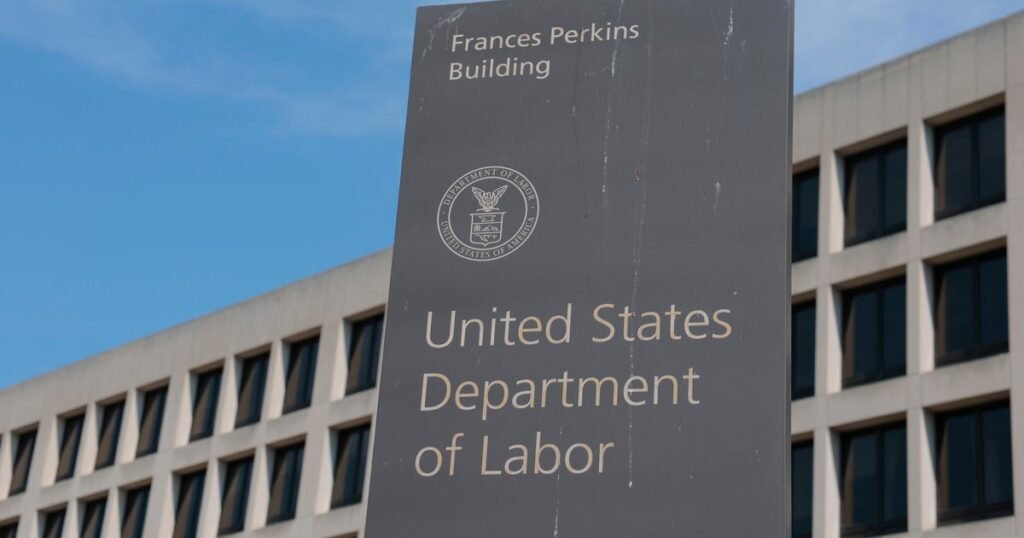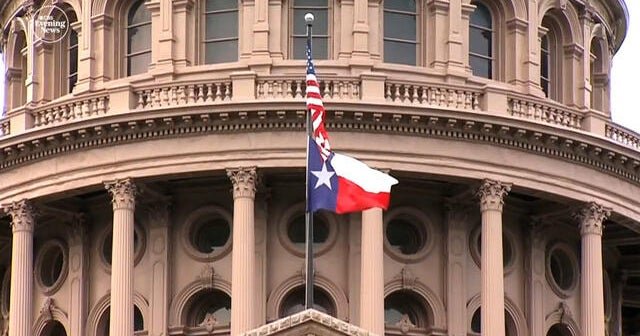
The Bureau of Labor Statistics last week issued a steep downward revision to May and June’s hiring numbers, prompting President Trump to call the edits “miscalculations” by the department’s commissioner, whom he subsequently fired, in a social media post on Aug. 1.
While the downward revision of May and June payroll growth by 258,000 marked the largest two-month revision to the jobs numbers since 1968, revisions themselves are not uncommon. Revisions are “a feature, not a bug” of the agency’s reporting process, according to Erica Groshen, former BLS commissioner under the Obama administration told CBS MoneyWatch.
Larger revisions have been recorded, but only when the economy has been in a recession, according to a Goldman Sachs analysis for BLS data.
How the BLS processes its reports
The BLS surveys both households and businesses for its monthly jobs report. After releasing an initial report, it’s common for the agency to issue revisions to the prior monthly figures, as more accurate data is collected over time.
That’s because while some survey recipients respond to the agency’s surveys immediately, others report data late. In the interest of reporting employment information in a timely manner, though, the BLS will issue its monthly jobs report based on the responses it is given by a certain time.
“The BLS wants to get the information as accurate as possible, but it doesn’t want to wait too long to put out information that’s useful,” Groshen said. “So it puts out preliminary numbers, saying they are an estimate, then it gathers more information and improves that estimate.”
“If you send out a survey to a bunch of people, some will turn it back in on time and some of them won’t,” Michele Evermore, a former Department of Labor employee and senior fellow at The Century Foundation, a progressive, independent think tank told CBS MoneyWatch. “The faster you make a determination, the more you’re going to have to fill in the blanks,” she said. In the interim, the BLS relies on scientific modeling to paint a more complete picture of the state of the job market. “You have to fill in the gaps, and the more reports you get back, the more holes you can fill, and the more accurate a report you get.”
Eventually, the inclusion of late responses to surveys by both employers and workers enables the agency to provide a more accurate picture of the state of hiring and unemployment in the U.S., Evermore explained.
The cuts to the number of jobs that were added in May and June were spread out across both public- and private-sector jobs. The downward revision to public-sector payroll growth “mostly reflected lower state and local government job gains,” Goldman Sachs analysts wrote in a research note. Private-sector job gains were previously overstated because of incomplete response data, according to the analysts.
Groshen acknowledged that the revisions were “definitely on the large side,” but that “they happen, and are the product of the same monthly process.
Cuts pertaining to government jobs were driven primarily by reductions in hiring by state and local education establishments, according to the BLS. Groshen attributes the job cuts to the expiration of pandemic-era government subsidies that are leading to a pullback in hiring.
“These subsidies were cut, so they are not hiring as many people as they had been in the past, and state and local governments often report late, so that information came in late,” she said.
Evermore, of The Century Foundation, noted that the BLS revisions only apply to jobs that were added in both May and June, and not to “the pool of all the jobs in the U.S.”
“While it seems like a big revision, percentage-wise, it’s floating on top of the entire labor market. So while it’s big, it’s not as dramatic as some people are acting like it is,” she said.
Dismissal of BLS commissioner
In his Truth Social post on Friday, Mr. Trump, accused the agency’s Commissioner Erika McEntarfer of political bias before announcing her dismissal in response to the downward revision of jobs numbers. “I have directed my Team to fire this Biden Political Appointee, IMMEDIATELY. She will be replaced with someone much more competent and qualified. Important numbers like this must be fair and accurate, they can’t be manipulated for political purposes,” the president wrote.
Even though it has been asked a number of times since Friday, the White House has not provided any evidence that the numbers were manipulated for political purposes.
According to Groshen, the drastic revise of the job numbers don’t reflect a “failure” of the BLS to do its job.
“It’s not a failure and it’s not bias. It’s not like the commissioner said, ‘Oh, I think I’m going to change that numbers.’ The commissioner has no power, no ability to do that.”
Evermore concurred. “Having worked with BLS for years, it’s impossible to cook the books as things stand,” she told CBS MoneyWatch.
For years, it’s become increasingly difficult to collect complete data based on surveys fielded to hundreds of thousands of employers and individuals, according to Groshen.
“There is a very long-term term trend of a declining response rate, which is bedeviling the system,” she said. That’s in part because some surveys are fielded over the phone, and American households are increasingly ditching landlines.
Jeff Strohl, director of the Georgetown University Center on Education and the Workforce, a research policy institute, echoes others in noting that BLS releases monthly jobs numbers knowing that they’ll be revised. But the agency prioritizes timeliness over 100% accuracy because “the currency of the data is still important,” he said.
Low response rates — only about 70% of employers surveyed respond on time — make revisions inevitable. according to Strohl. “A month later, the response rate goes up to 90%-95%, so you have 25%, or 150,000, more firms reporting their data,” he said.
Additionally, weekly shocks to the economy, such as created by tariffs, adds another layer to the challenge of releasing accurate jobs data each month.
“The U.S. economy is going through a huge number of shocks on a weekly basis,” Strohl told CBS MoneyWatch. “Tariffs are being threatened and applied, and there is a level of economic uncertainty affecting the job market.”
For example, he said, some job seekers are having offers rescinded as major universities lose research grants. “That’s stopping hires from working on projects the money was going to feed,” he said.



